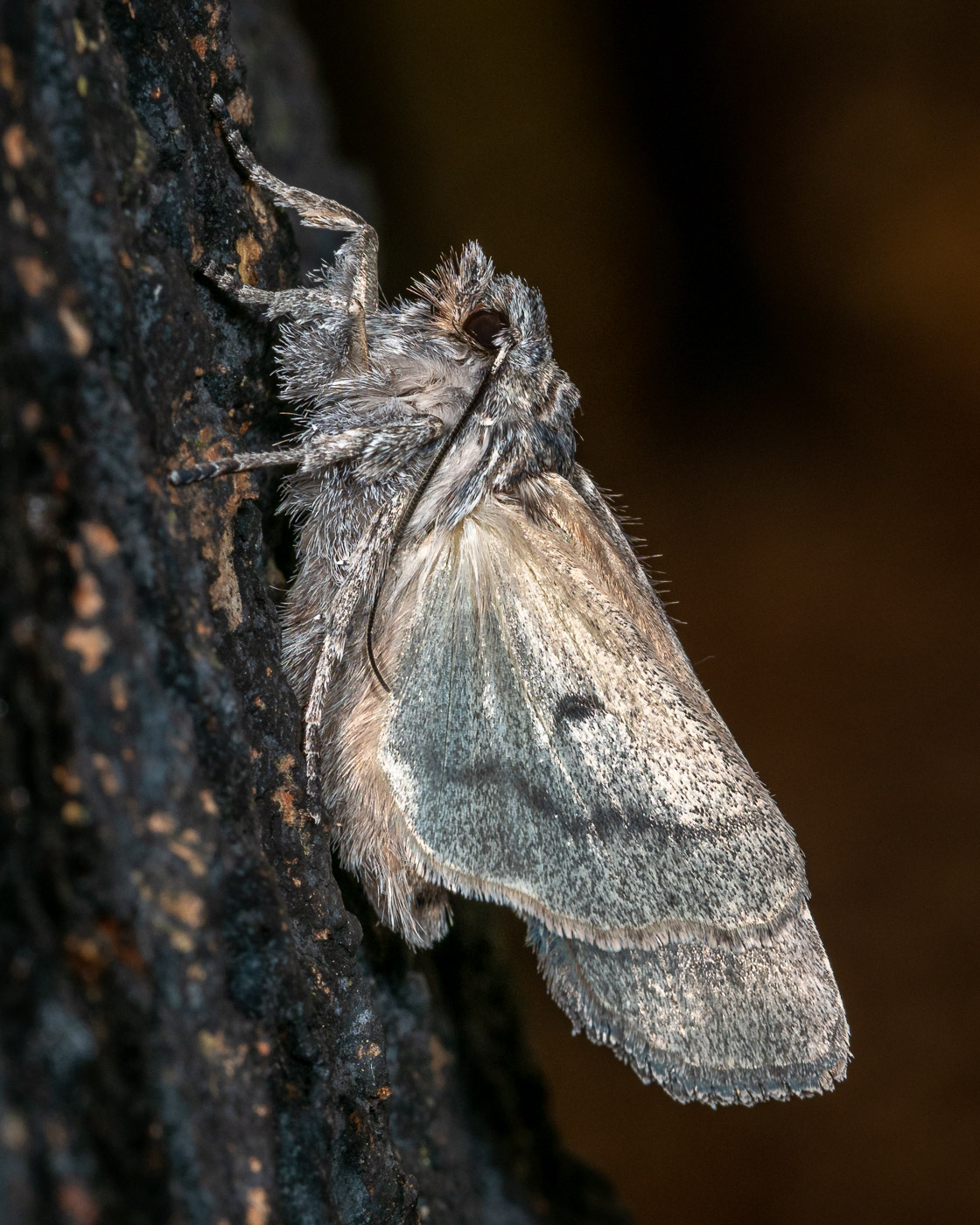Halloween Nature Surprises

Xanthotype Moth
August 23, 2022
Moths Are Pretty Too!
January 14, 2023Did you know that there are real-life Witches, Ghosts, Mummies, the Rising dead, and Zombies in nature?? I'll start with a Beautiful witch and a Friendly ghost, before getting to some of the spookier scary creatures.
This Black witch doesn't need a broomstick!
She's a large bat-like nocturnal flier (wingspan up to 15 cm/ 6 inches) with a long history as an omen in folklore from Brazil to the southern US. Depending on the culture, she's either a good witch or a bad witch. In some places her appearance indicates impending death. In others, she's a deceased relative returning to say hello. She might make you go blind, or make you bold, or bring you luck including riches.
This Black Witch appeared in our garage one night in July two years ago. I interpreted her visit as a good omen! She's a rare stray up to my area. She's Ascalapha odorata.



Halloween needs a friendly ghost - Atlantic Ghost Crab.
These ghosts haunt the empty nighttime beaches along the Atlantic coast from Massachusetts to Brazil. A friendly ghost even walked right up to my husband on a sandy trail. Ghost crabs don't fear humans, and are so friendly they’re known to crawl right over people!
By day, the crabs hide in underground sand tunnels that they conceal. At dusk, they emerge to feed and claim the beach. Their color blends with the sand, and in the night their ghostly figures disappear into the background. Most daytime beach bathers never see this ghost, but they can negatively impact their population. When at the beach, stay off the dunes and vegetated areas to prevent stepping on a burrow and crushing a ghost.
I had the good fortune to see these ghosts in September at Cape Henlopen State Park in Delaware. It's Ocypode quadrata.


Dead Man's Fingers rising in my garden???
Now to the spooky part of nature in my Halloween theme! These fingers are a mushroom, the fruiting body of a wood-rotting fungus that "emerged" in my front yard. This is its early stage where it resembles blue fingers with white nails. We first found "fingers" last year when it had 4 fingers! This is the second year in the same spot, but we’re down to only 2 fingers.
Over time, the fingers darken and turn to black. These 2 finger tips actually disappeared in June, probably eaten. The fungus itself can live for years as strands in dead or dying wood, but could be here in this spots that was a former corn field from a piece of wood mulch. We have also found it in our nearby woods.
The fungus is Xylaria polymorpha and Dead Man's Fingers is its common fruiting name. Photo taken in May.

Mummies in the insect world aren't photogenic - but bring joy to gardeners!
These are one of the scarier parts of nature for our human brains to accept, thus another Halloween themed post. There's an amazing world of wasps whose larvae have evolved as specialist insect "meat" eaters. The unfortunate host (in this case an aphid), has an egg laid insider her. The host aphid gets eaten from the inside by the developing larvae. The infected aphid bloats and turns brown as it dies. The resulting hardened body garners the name "Aphid Mummy". Before the host actually dies, the larvae will make a little hole and use silk strands to connect the host to its leaf or branch. Then it goes back inside to pupate. As the adult wasp exits the aphid, it creates a bigger hole like you see here.
These insect/ parasitoid relationships are part of our ecosystems' natural controls, and without them, we'd be overrun with insects. But in the cruel manner of how nature works, these parasitic wasps also have enemies that frequently feed on them before they emerge. These are goldenrod aphid specialist parasitized by brachonid Aphid Mummy Wasps in the Subfamily Aphidiinae.
I'll end the Halloween theme with Zombies - the scariest of all!
This strange white creature was an adult moth, infected by a parasitic fungus, likely Cordyceps. For comparison, on the right is an unaffected Dagger Moth in a similar position.
So why a zombie and not a wrapped mummy? Once infected, the fungus slowly destroys the host. The extra Zombie-like part is that the fungus can even cause behavioral changes. Most frequently, they're compelled to climb to a higher spot. Yikes! I wonder if they hold their hands forward, walk with stiff legs, and moan??!! My husband found this Zombie last winter at the top of a cut stump about 2 feet off the ground. One theory is that by causing the victim to move to higher ground, the controlling fungi will be able to spread spores over a greater area. Those extended parts are the fruiting bodies where the spores are released.






